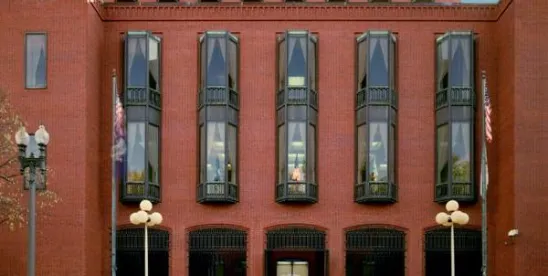The US Court of Appeals for the Federal Circuit granted a mandamus petition after analyzing the Fifth Circuit’s public and private interest factors for transfer motions and ordered the US District Court for the Western District of Texas to transfer a case to the petitioner’s venue. In re Google LLC, Case No. 23-101 (Fed. Cir. Feb. 1, 2023) (Lourie, Taranto, Stark, JJ.).
Jawbone Innovations, LLC, had an eventful 2021:
-
February: Incorporated in Texas
-
May: Obtained ownership of nine patents (all directed to technologies behind the eponymous product line that liquidated in July 2017)
-
August: Rented office space in Waco, Texas
-
September: Asserted the nine patents it just acquired against Google in the Western District of Texas–Waco Division.
Google moved to transfer the dispute to the US District Court for the Northern District of California. That district was where (1) the accused products (earbuds, smartphones, speakers, displays and software) were researched, designed and developed; (2) the asserted technology was developed, and the asserted patents were prosecuted; and (3) the witnesses and sources of proof were primarily located. In contrast, no witnesses or sources of proof were located in the Western District of Texas. Moreover, Jawbone Innovations had no personnel in Waco nor activities related to the accused technology in the whole of Texas.
Judge Albright nevertheless denied Google’s transfer motion, weighing the Fifth Circuit’s four public interest factors and four private interest factors and finding that the transferee venue failed to meet the Fifth Circuit’s “clearly more convenient” standard. With the district court finding half of the eight factors not favoring either the transferee or the transferor, its holding boiled down to a ruling that considerations of “court congestion” and “judicial economy” (found to favor the transferor) outweighed considerations of “unwilling witness compulsion” and the “cost of attendance for willing witnesses” (found to favor the transferee).
Google petitioned the Federal Circuit for a writ of mandamus. The Court, applying the Fifth Circuit’s eight factor test, identified clear error in the district court’s analysis of five of the factors.
First: Addressing the “cost of attendance for willing witnesses” factor, the Federal Circuit found error in the district court’s conclusion that this factor only slightly favored transfer. Rather, the Court explained that this factor “weigh[ed] heavily in favor of transfer” because the transferee venue was clearly more convenient for potential witnesses, especially Google employees with technical, marketing and financial knowledge of the accused products. The error was localized to how the district court considered a Google declaration identifying at least 11 potential employee witnesses (all of whom were located in the transferee venue) and Jawbone Innovations’ assertions that the declaration omitted three potentially relevant Texas-based employees. The Court noted that while this 11 to three imbalance alone was sufficient to settle this factor, the district court’s error went further, finding Google’s declaration unreliable and less worthy of consideration because of the alleged omissions. The Federal Circuit determined this was error on error because the district court improperly ignored that the depositions of the Texas-based employees identified by Jawbone Innovations established that none of them worked on the accused features.
Second and Third: With respect to the “local interest” and “relative ease of access to sources of proof” factors, the Federal Circuit found error in the district court’s finding that these factors were neutral. Rather, it concluded that both favored the transferee. Regarding the “local interest” factor, the Federal Circuit’s 2021 decision in Juniper Networks negated the weight of Jawbone Innovations’ recent presence in the Western District of Texas. The Court further found that this error was compounded since Jawbone Innovations’ recent and fragile connections to Texas were clearly outweighed by Northern California’s particularized connection to the dispute. The Federal Circuit also disagreed with the district court’s finding of “relative ease of access to sources of proof.” To the contrary, the Court found that this factor unambiguously favored the transferee; the accused product physical prototypes were in the Northern District of California, as well as key non-party witnesses (e.g., patent prosecuting attorneys, former Google employees and relevant third-party companies).
Fourth and Fifth: With respect to the “court congestion” and “judicial economy” factors, the Federal Circuit assigned error in terms of the only two factors that the district court concluded favored the transferor. The Court reiterated prior holdings that limited these factors’ relevance to circumstances not applicable here. Per Juniper Networks, the court congestion factor does not apply to disputes like this where the plaintiff is not engaged in the market and thus is not threatened in a way that “might add urgency to case resolution and give some significance to the time-to-trial difference.” Rather, in accordance with the Federal Circuit’s 2021 decision in Samsung Elecs., the judicial economy factor cannot undermine clear outcomes reached after analyzing the seven other factors, and here the Court’s analysis of those seven factors clearly favored the transferee.
Since the Federal Circuit’s correction on these five factors were favorable to granting Google’s transfer motion, the Court explained that all eight factors were either neutral or in favor of the transferee venue.
Practice Note: The Federal Circuit identified another error in the district court’s reasoning regarding the “judicial economy” factor: To the extent a plaintiff has filed multiple actions in the same district asserting similar or the same patents and there are motions to transfer all of those actions to the same transferee, that should result in this factor being held as neutral.



 />i
/>i

